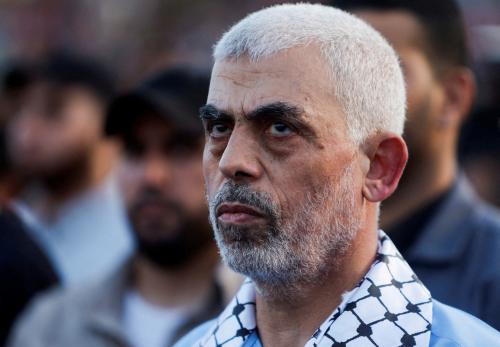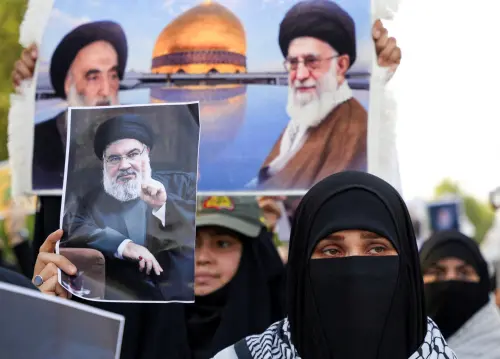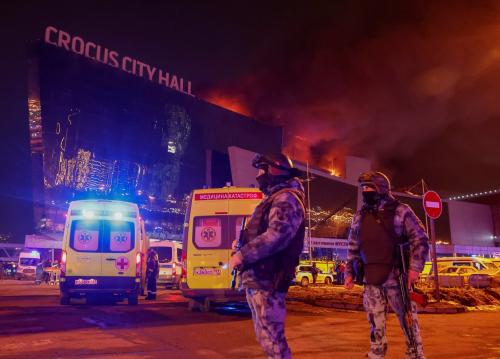There are lots of ways for Syria to go wrong for Russia. Analysts have tended to focus on Moscow’s military shortcomings in that theater, wondering if Syria will become Russia’s Vietnam. They’ve also pointed to Russia’s deep economic troubles—exacerbated, of course, by very low oil prices—which call into question its ability to pay for the military campaign over time.
One of the understudied aspects of Russia’s involvement in the Syrian conflict is the ramifications it could have for the Russian government’s relations with Muslims back at home. Moscow is now home to the largest Muslim community of any city in Europe (with between 1.5 and 2 million Muslims out of a population of around 13 million, although illegal immigration has distorted many of the figures). Russian President Vladimir Putin and other leaders have consciously avoided choosing sides in the Sunni-Shiite divide in the Middle East—recognizing that doing so could provoke a backlash among Russian Muslims.
The rise of an extremist, Salafi- or Wahhabi-inspired, religious state in Syria—an Islamic caliphate established either by the Islamic State or by any religiously-based extremist group in the region—could pose a significant problem for Russia. That’s both because of how it’s likely to behave toward other states in the region (including key Russian partners like Israel, Egypt, and Iran) and because of what it could inspire in Mother Russia, where efforts by militant groups to create their own “caliphate” or “emirate” in the North Caucasus have created headaches for Moscow since the early 2000s.
Islam and Russia go way back
Russia is a Muslim state. Islam is arguably older than Christianity in traditional Russian territory––with Muslim communities first appearing in southeastern Russia in the 8th century. It is firmly established as the dominant religion among the Tatars of the Volga region and the diverse peoples of the Russian North Caucasus. These indigenous Sunni Muslims have their own unique heritage, history, and religious experience. The Tatars launched a reformist movement in the 19th century that later morphed into ideas of “Euro-Islam,” a progressive credo that could coexist, and even compete, with Russian Orthodoxy and other Christian denominations. Sufi movements, rooted in private forms of belief and practice, similarly prevailed in the Russian North Caucasus after the late 18th century.
Before the collapse of the Soviet Union in the 1980s, when Central Asia and the South Caucasus were also part of the state, the USSR’s demography was in flux. The “ethnic” Muslim share of the population was rising as a result of high birthrates in Central Asia, while the Slavic, primarily Orthodox, populations of Russia, Belarus, and Ukraine were declining from high mortality and low birthrates. Since the dissolution of the USSR, Russia’s nominal Muslim population has swelled with labor migration from Central Asia and Azerbaijan, which has brought more Shiite Muslims into the mix, in the case of Azeri immigrants. As in other countries, Russia has also had its share of converts to Islam as the population rediscovered religion in the 1990s and 2000s after the enforced atheism of the Soviet period came to an end.
The foreign fighter problem
The Kremlin cannot afford the rise of any group that fuses religion and politics, and has outside allegiances that might encourage opposition to the Russian state among its Muslim populations. The religious wars in the Middle East are not a side show for Russia. Thousands of foreign fighters have flocked to Syria from Russia, as well as from Central Asia and the South Caucasus, all attracted by the extreme messages of ISIS and other groups.
Extremist groups have been active in Russia since the Chechen wars of the 1990s and 2000s. A recent Reuters report reveals how Russia allowed—and even encouraged—militants and radicals from the North Caucasus to go and fight in Syria in 2013, in an effort to divert them away from potential domestic terrorist attacks ahead of the February 2014 Sochi Winter Olympics. The Kremlin now worries that these and other fighters will return from Syria and further radicalize and inflame the situation in the North Caucasus and elsewhere in Russia. Putin intends to eliminate the fighters, in place, before they have an opportunity to come back home.
Putin also knows a thing or two about extremists from his time in the KGB, as well as his reading of Russian history. As a result, he does little to distinguish among them. For Putin, an extremist is an extremist—no matter what name he or she adopts. Indeed, Russian revolutionaries in the 19th and 20th centuries wrote the playbook for fusing ideology with terror and brutality; and Putin has recently become very critical of that revolutionary approach––moving even to criticize Soviet founder and Bolshevik Party leader Vladimir Lenin for destroying the Russian state and empire one hundred years ago in the Russian Revolution of 1917. For Putin, anyone whose views and ideas can become the base for violence in opposition to the legal, legitimate state (and its leader) is an extremist who must be countered. Syria is a crucial front in holding the line.
The long haul
With this in mind, we can be sure that Putin sees Russia in for the long haul in Syria. Recent signs that Russia may be creating a new army base in Palmyra to complement its bases in Latakia and Tarsus, underscore this point. Having watched the United States returning to its old battlegrounds in both Afghanistan and Iraq to head off new extremist threats, Putin will want to prepare contingencies and keep his options open.
The fight with extremists is only beginning for Russia in Syria, now that Moscow has bolstered the position of Bashar Assad and the secular Alawite regime. For Putin and for Russia, Syria is the focal point of international action, and the current arena for diplomatic as well as military interaction with the United States, but it is also a critical element for Putin in his efforts to maintain control of the homefront.



Commentary
Putin battles for the Russian homefront in Syria
May 23, 2016